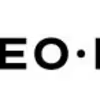Optimize Workforce with Best HCM Software: A Complete Guide

Optimize Workforce with Best HCM Software: A Complete Guide 1
Human Capital Management (HCM) is a key player in the business world. It is all about managing and developing a company’s workforce. It’s not just about hiring people; it’s about nurturing their skills, ensuring their growth, and aligning their goals with the company’s objectives.
The importance of HCM in the business landscape can’t be overstated. Companies can unlock their full potential with the right approach and the best HCM software. However, managing a workforce effectively is full of challenges. Businesses often need help finding the right balance between employee needs and company goals.
This is where HCM strategies come into play. By implementing these strategies, companies can see a significant rise in employee engagement. Productivity goes up, and staff stick around longer. In short, effective HCM is a game-changer, setting the stage for a thriving, successful business.
Table of Contents
Building a Foundation for HCM Success
Success in Human Capital Management (HCM) starts with a solid foundation. The stronger the base, the sturdier the structure. This foundation involves understanding and aligning your company’s culture, analyzing your workforce, and setting clear goals.
Defining Your Company’s Values and Culture
A strong foundation for HCM begins with your company’s values and culture. When HCM strategies align with these values, it creates a sense of unity and purpose. This alignment helps employees feel connected to the company’s goals.
It’s also crucial to build a positive work environment. A supportive and encouraging atmosphere boosts morale and productivity. It makes employees feel valued and respected, a key to long-term success.
Conducting a Workforce Analysis
Understanding your workforce is essential. Start by assessing your current employees’ demographics, skills, and needs. This analysis shows where your team excels and where they might need more support.
It also helps identify gaps in skills, guiding future hiring decisions. Knowing what your workforce looks like today prepares you for the talent you’ll need tomorrow.
Setting SMART Goals for Your HCM Initiatives
SMART goals are vital for effective HCM. These goals are Specific, Measurable, Achievable, Relevant, and Time-bound.
For instance, a SMART goal could be: “Increase employee retention by 15% in the next year through enhanced engagement strategies.” Another example might be: “Implement a new training program within six months to improve leadership skills among middle managers.”
These goals give clear direction and make tracking progress simpler. With SMART goals, you can turn HCM strategies into actionable steps, paving the way for tangible improvements in your workforce management.
Key HCM Strategies to Implement
Implementing effective Human Capital Management (HCM) strategies is crucial for any business aiming for success. These strategies attract top talent and play a significant role in retaining them.
Here, we dive into four key areas of HCM strategies that can transform your workforce management.
Talent Acquisition and Onboarding
Attracting the right talent is the first step towards building a solid team. Use effective channels like job boards, social media, and employee referrals to reach potential candidates. Once you have them, an efficient onboarding process is vital.
It sets the tone for an employee’s journey in your company. Tools like applicant tracking systems streamline recruitment, while onboarding software helps new hires integrate smoothly. This approach leads to better engagement and retention.
Performance Management and Development
Clear and transparent performance management systems are essential. They guide employees on what’s expected and how they’re doing. Regular feedback and performance reviews help with this. Development opportunities, like training and workshops, also play a crucial part.
Software tools like performance appraisal and learning management systems support these efforts. They make it easier to track progress and provide necessary resources for employee growth.
Compensation and Benefits
A competitive compensation package is a must to attract and keep talent. But it’s not just about salary. Consider offering a range of benefits tailored to diverse needs.
Some examples include health insurance, retirement plans, and flexible working options. Personalized benefits increase employee satisfaction. Reward and recognition programs also boost morale and show appreciation for hard work.
Employee Engagement and Retention
Fostering a culture of open communication is key. Encourage employees to share their thoughts and address their concerns promptly. This creates a trusting and collaborative environment.
Initiatives that promote work-life balance and well-being are equally important. They help maintain a happy and healthy workforce, leading to higher retention rates.
Choosing the Right HCM Software
Selecting the proper Human Capital Management (HCM) software is a pivotal decision for any business. It’s not just about choosing a tool; it’s about finding the best HCM software that aligns with your company’s unique needs and goals.
This choice can significantly impact your workforce management effectiveness.
Understanding Your Business Needs: Size, Industry, and Growth Stage
First, consider your business size, industry, and growth stage. A small startup has different needs than a large corporation. The right HCM software for your business should cater to its specific requirements.
For example, a growing tech company might need a robust talent acquisition module, while a well-established manufacturing firm may prioritize performance management.
Essential Features to Consider
Payroll and Benefits Management: This is fundamental for any HCM software. It should efficiently handle payroll processing and manage employee benefits, ensuring compliance with legal requirements.
Talent Acquisition and Onboarding: Your HCM system should streamline the hiring process. Look for features like applicant tracking, interview scheduling, and an effective onboarding process.
Performance Management and Development: The software must support setting and tracking performance goals, providing feedback, and facilitating employee development plans.
Learning and Training Tools: Continuous learning is key in today’s dynamic work environment. The software should offer learning management systems to aid in skill development and career growth.
Employee Engagement and Communication Platforms: Tools that promote communication and engagement, like feedback tools and employee surveys, are vital for maintaining a positive workplace culture.
Budget and Implementation Considerations
Budget is a crucial factor. Ensure the software provides value for money and consider the total cost of ownership, including implementation and ongoing support.
User Experience and Adoption
Lastly, the user experience is critical. The software should integrate seamlessly into your existing workflows, be intuitive, and be easy to adopt by all users to ensure successful implementation and usage.
Top Contenders in the Best HCM Software Arena
In the quest for the best HCM software, it’s crucial to know the top players in the market. These solutions stand out for their unique features and strengths, catering to various business needs. Let’s dive into a comparative analysis of these leading HCM software contenders.
Leading Players: A Comparative Analysis
Workday: Workday is renowned for its scalability, making it ideal for businesses anticipating growth. Its user-friendly interface simplifies complex HR tasks.
SAP SuccessFactors: SAP SuccessFactors excels in customization options that fit various business models. Its global reach makes it a top choice for multinational corporations.
Oracle HCM Cloud: Oracle HCM Cloud stands out with its advanced analytics capabilities. It’s a go-to for businesses focused on strategic workforce planning and data-driven decisions.
BambooHR: BambooHR is suitable for small and medium-sized businesses (SMBs). It offers simplicity and ease of use, focusing on basic yet essential HCM functions.
Rippling: Rippling is an all-in-one solution known for its ease of use. It integrates various HR functions seamlessly, appealing to businesses seeking comprehensive solutions.
Selecting the right HCM software depends on your specific business needs. Consider factors like company size, industry, and specific HR functions you need to manage. These top contenders have unique strengths, so aligning their features with your requirements is key.
The Future of HCM: Emerging Trends and Technologies
The landscape of Human Capital Management (HCM) is constantly evolving. Emerging trends and technologies are shaping the future of how businesses manage their workforce. Understanding these trends is key to staying ahead in this dynamic field.
AI-powered Talent Management
Artificial Intelligence (AI) is revolutionizing talent management. AI tools in HCM can analyze vast amounts of data, providing insights for better decision-making.
Predictive analytics, a part of this AI revolution, helps foresee future workforce trends and challenges. This allows companies to prepare and adapt proactively, ensuring they are always a step ahead.
Hyper-Personalization and Employee Experience Focus
Employee experience is now at the forefront of HCM strategies. Hyper-personalization involves tailoring HR processes to meet individual employee needs.
This approach leads to increased employee satisfaction and productivity. Companies can create a more engaged and motivated workforce by focusing on personalized career paths, training programs, and benefits.
The Rise of Skills-Based Management
The shift towards skills-based management is a significant trend. This approach emphasizes an employee’s skills and competencies over traditional qualifications. It aligns with the growing importance of continuous learning in the workplace.
By fostering an environment of ongoing development, companies can ensure their workforce remains agile and adaptable in a rapidly changing business environment.
Harnessing HCM for Organizational Excellence
Investing in effective Human Capital Management (HCM) strategies is crucial for any business aiming for success. Integrating the best HCM software into your business processes can lead to remarkable improvements. The impact is substantial, from enhancing employee engagement to optimizing management processes.
We encourage you to take action. Start implementing these HCM strategies in your organization. Begin by assessing your current practices and identifying areas for improvement.
Feel free to explore the latest HCM software options that align with your business needs.
For further learning, consider attending webinars, participating in HR forums, and reading up-to-date publications in this field.
Embracing these strategies and tools will benefit your workforce and pave the way for your organization’s overall growth and success.
Like this project
Posted Feb 7, 2024
Human Capital Management (HCM) is a key player in the business world. It is all about managing and developing a company's workforce. It's not just about hiring…
Likes
0
Views
4
Clients


Content Writing Services

Seo






